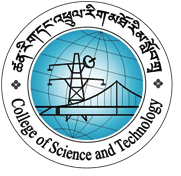Design Thinking workshop by Professor Jennifer Widom from Stanford University School of Engineering.
The process of designing a solution in the form of a product or service is an essential step towards the development of a society. Innovation, curiosity and collaboration is what has driven civilizations for centuries. To introduce the concept of design thinking, a workshop was held at the Enterprise hall on 22nd of March 2023, with 18 students and a few faculty in attendance.
The event began with an interesting activity where the participants wrote about their physical and mental state of being on sticky notes. The participants then moved around the room, introducing themselves and learning how the other attendees were feeling on the particular day. While the activity commenced, slides showing pictures of similar design thinking workshops at different parts of the world were on display.
The program then proceeded towards forming groups for the main objective of the day, which was to design a solution for a real life problem. The problem to be solved for the day was “How to reverse the number of people leaving for Australia from Bhutan?”. Each group took turns in brainstorming their ideas and picking different domains where each domain focused on different unique aspects that makes Bhutanese people leave for Australia.
Once a domain was chosen, the groups were introduced with a panel of users who were to be interviewed with regard to the various domains chosen by the teams. This was done so that the participating teams could empathize and have a different perspective beyond their own biases. The interview helped the groups ideate and focus on a narrower problem and decide on a plan of action.
At the final stage of the workshop, the groups were then responsible to create an exhibit that helps different users to not only understand but also physically experience the proposed solution. The exhibit could be in the form of a skit, a story board or a physical model that explains the proposed solution. While each panel member visited the exhibits, they provided feedback on what could improve the proposed solution which were noted down by the groups.
At the very end, each group presented their ideas and solutions to the entire room displaying amazing creativity and skills in the form of art and models. Few concluding remarks from Ms Widom highlighting the importance of continuity and the cyclic process of design thinking marked the end of the event.
